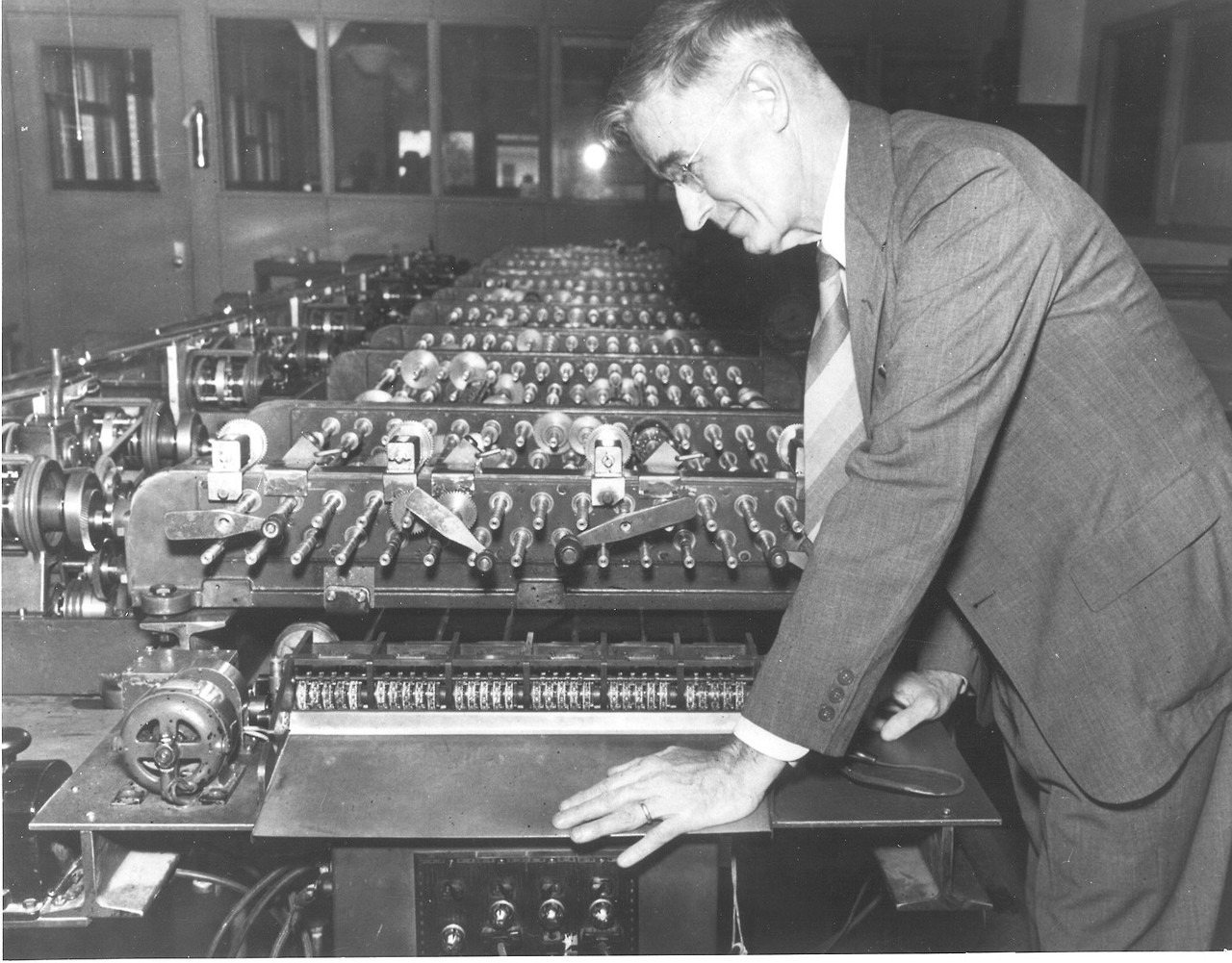History of Computers - Differential Analyzer


Contents
Overview
The creator of the first widely practical differential analyzer was Harold Locke Hazen and Vannevar Bush. They created this analog computer at MIT. The differential analyzer is used for solving sixth order differential equations by integration . The differential analyzer was completed in 1931 and it was the model for the construction of other similar machines. His machine was the basis for his improved design called the Rockefeller differential analyzer. This machine was used by the Navy for the computation of Navy range tables and studies of fire-control systems. This machine weighed over 100 tons, it had over 2,000 electronic tubes, 200 miles of wire, and 150 motors.
Significance
The significance of the differential analyzer was that it was one of the first analogue computers that was programmable. The machine paved the way for other machines like it. Without the machine, calculations that affected the fire control systems of the navy by solving the differential equations more accurately and quicker. This machine was crucial to the war efforts in WWII. Eventually electronic differential analyzers took over the analog ones.
References
http://www.nasonline.org/publications/biographical-memoirs/memoir-pdfs/bush-vannevar.pdf http://depa.fquim.unam.mx/amyd/archivero/MATCOM_VANNEVAR_BUSH_Biografia_Doug-Long_17286.pdf http://projecteuclid.org/download/pdf_1/euclid.bams/1183499313
Links
http://en.wikipedia.org/wiki/Differential_analyser http://en.wikipedia.org/wiki/Vannevar_Bush